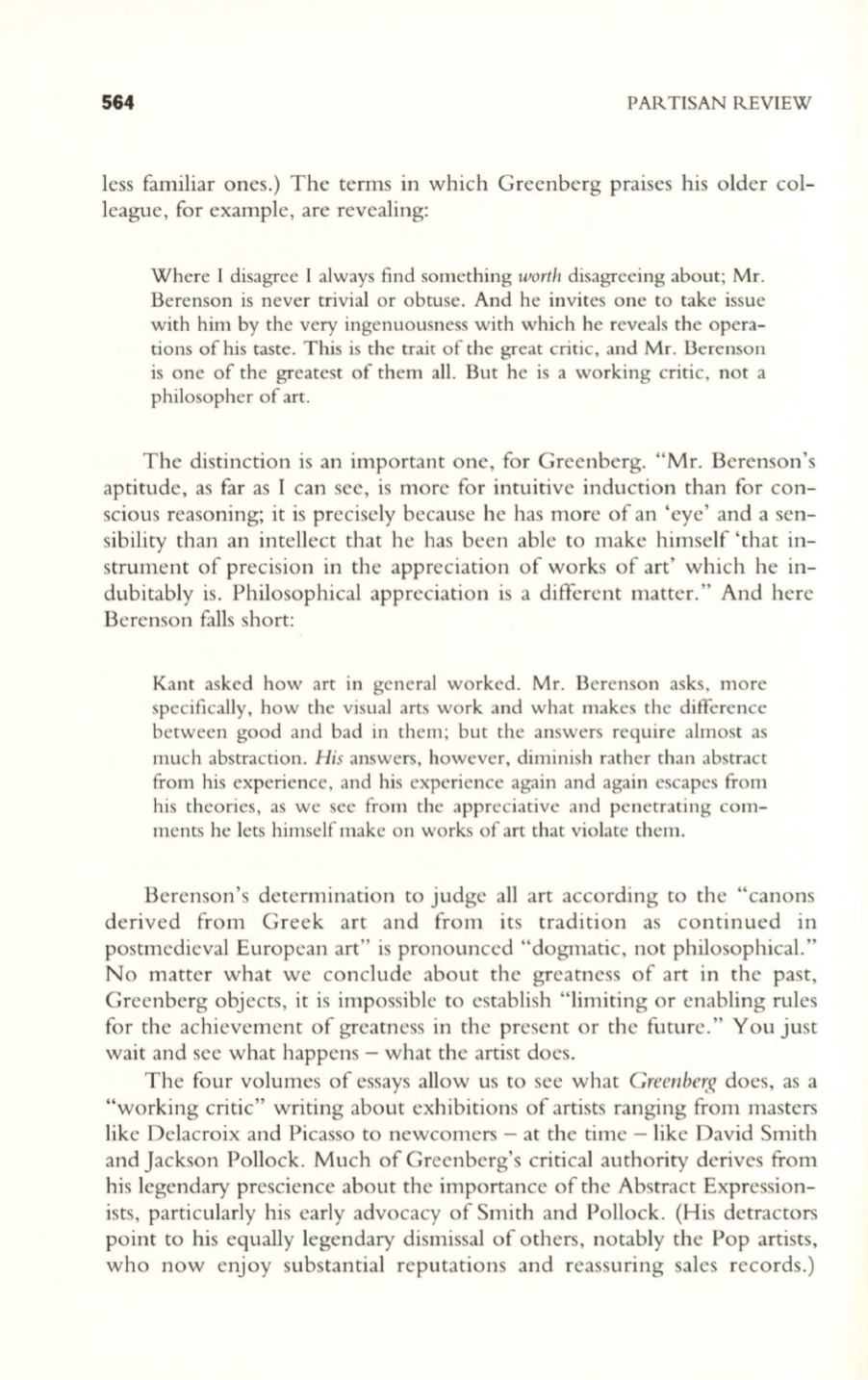
564
PARTISAN REVIEW
less familiar ones.) The terms in which Greenberg praises his older col–
league, for example, are revealing:
Where I disagree I always find something
worth
disagreeing about; Mr.
Berenson is never trivial or obtuse. And he invites one to take issue
with him by the very ingenuousness with which he reveals the opera–
tions of his taste. This is the trait of the great critic, and Mr. Berenson
is one of the greatest of them all. But he is a working critic, not a
philosopher of art.
The distinction is an important one, for Greenberg. "Mr. Berenson's
aptitude, as far as I can see, is more for intuitive induction than for con–
scious reasoning; it is precisely because he has more of an 'eye' and a sen–
sibility than an intellect that he has been able to make himself 'that in–
strument of precision in the appreciation of works of art' which he in–
dubitably is. Philosophical appreciation is a different matter." And here
Berenson falls short:
Kant asked how art in general worked. Mr. Berenson asks, more
specifically, how the visua l arts work and what makes the difference
between good and bad in them; but the answers require almost as
much abstraction.
His
answers, however, diminish rather than abstract
from his experience, and his experience again and again escapes from
his theories, as we see from the appreciative and penetrating com–
ments he lets himself make on works of art that violate them.
Berenson's determination to judge all art according to the "canons
derived from Greek art and from its tradition as continued in
postmedieval European art" is pronounced "dogmatic, not philosophical."
No matter what we conclude about the greatness of art in the past,
Greenberg objects, it is impossible to establish "limiting or enabling rules
for the achievement of greatness in the present or the future." You just
wait and see what happens - what the artist does.
The four volumes of essays allow us to see what
Greenberg
does, as a
"working critic" writing about exhibitions of artists ranging from masters
like Delacroix and Picasso to newcomers - at the time - like David Smith
and Jackson Pollock. Much of Greenberg's critical authority derives from
his legendary prescience about the importance of the Abstract Expression–
ists, particularly his early advocacy of Smith and Pollock. (His detractors
point to his equally legendary dismissal of others, notably the Pop artists,
who now enjoy substantial reputations and reassuring sales records.)


